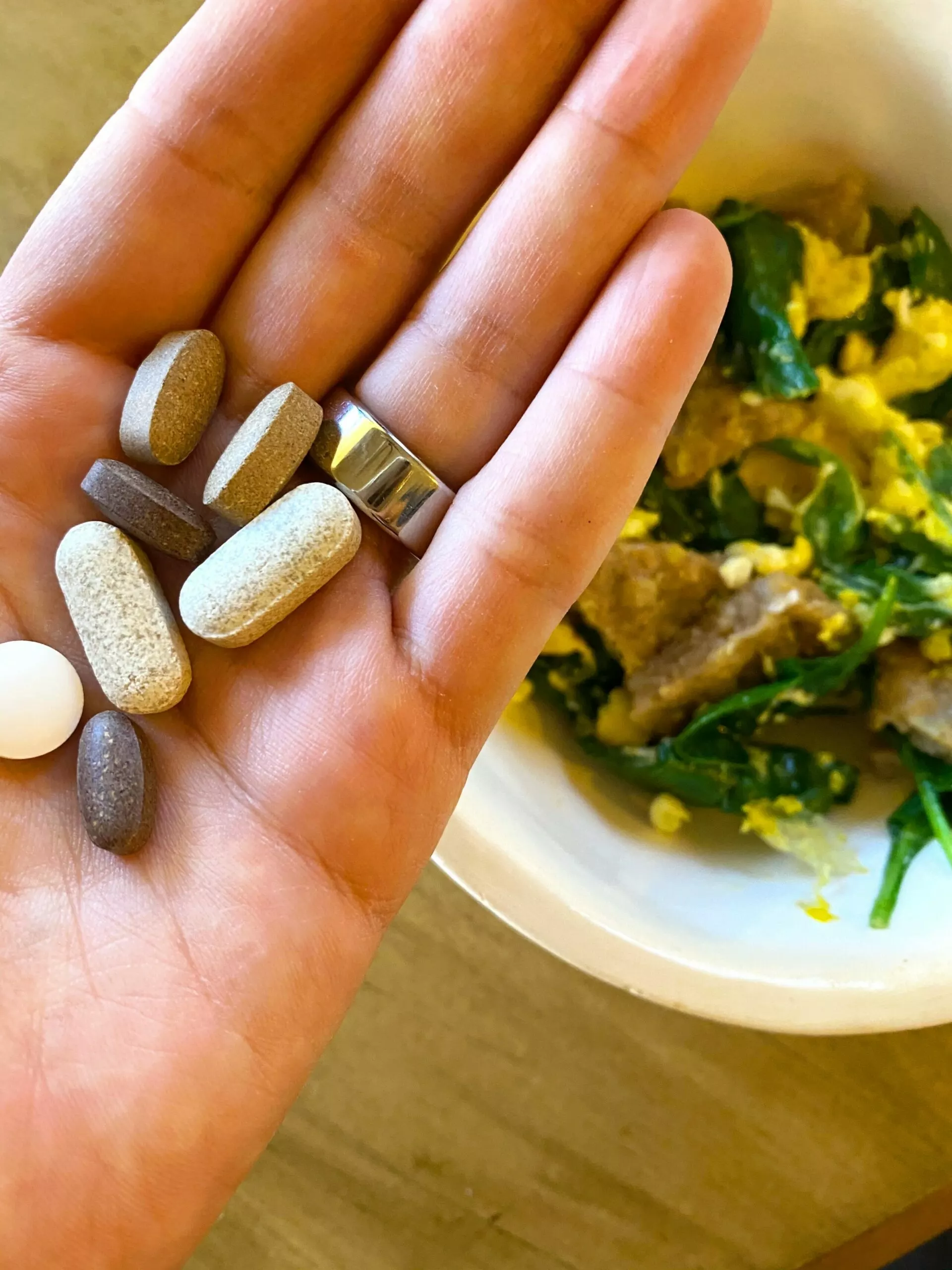Sharing some tips with natural remedies for PMS. Please keep in mind that this is for informational purposes and is not medical advice. If you struggle with PMS, please reach out to your health care provider for tips for your unique situation.
Hi hi! How are you? I hope you’re enjoying the morning so far! I’m taking Liv to a yoga class while P sees a movie with a friend, and we’re going to spend the rest of the day in the pool. 😉
For today’s post, I wanted to chat about some natural remedies for PMS! PMS used to be a horrible part of my life – it was a huge reason why I was put on birth control when I was 13- and was something that I struggled with for a long time. I regret taking birth control for so long as it just plopped a Band-Aid on a deeper issue. SO many women experience PMS symptoms, but thankfully, there are some things you can do that might be able to help.
A friendly reminder here that this post is not medical advice. If you struggle with PMS, please make an appointment with your health care provider to see if they can suggest tips. If they simply suggest birth control, find another provider that will help you determine the root cause.
PMS symptoms can often occur when there is estrogen dominance. Keep in mind that this isn’t a root cause, but can give some insight into habits and foundations that can be improved.
What is estrogen dominance?
Estrogen dominance is a hormonal imbalance that occurs when the level of estrogen in the body outweighs the level of progesterone. Estrogen and progesterone are two key female sex hormones that work together to regulate various aspects of a woman’s reproductive and overall health. When there is an excess of estrogen compared to progesterone, it can lead to an array of symptoms and health issues.
Estrogen dominance can arise due to various factors, including environmental toxins, stress, poor diet, hormonal birth control, and obesity.
When estrogen levels are higher than they should be, it can disrupt the delicate hormonal balance, causing a range of symptoms such as:
– Irregular menstrual cycles
– Heavy or prolonged periods
– Breast tenderness
– Mood swings and irritability
– Weight gain, especially around the hips and thighs
– Fatigue and low energy
– Water retention and bloating
– Headaches
– Decreased sex drive
Estrogen dominance can have broader implications on overall health as well. It may increase the risk of certain hormone-related conditions like fibroids, endometriosis, and breast cancer. Additionally, it can affect bone health, thyroid function, and immune system regulation.
Addressing estrogen dominance involves identifying and addressing the underlying factors contributing to the imbalance. Lifestyle changes, such as adopting a balanced diet, managing stress, engaging in regular exercise, and minimizing exposure to environmental toxins, can help support hormonal harmony. In some cases, healthcare professionals may recommend hormonal therapies or natural remedies to restore the balance of estrogen and progesterone in the body.
Eat more fiber
The answer lies in the beautiful interplay between fiber and our digestive system. Fiber acts as nature’s gentle cleanser, helping sweep away excess estrogen from our bodies through our bowel movements. Sometimes estrogen testing can reveal that estrogen levels are normal; however estrogen isn’t being properly metabolized by the body. Fiber and solid digestion can help!
The liver plays a crucial role in metabolizing hormones, including estrogen. When our bodies process estrogen, the liver helps convert it into a less active form, preparing it for excretion. However, if our bowel movements aren’t regular and efficient, that estrogen can get reabsorbed into our bloodstream, leading to estrogen dominance.
Go for fresh fruits and vegetables, whole grains, nuts, seeds, and legumes are all fantastic sources of fiber that can aid in proper hormone metabolism and elimination. Cruciferous vegetables like broccoli, cauliflower, kale, and Brussels sprouts are particularly beneficial in managing estrogen dominance. They contain a compound called indole-3-carbinol, which supports the liver in breaking down estrogen into its less active form, helping restore hormonal balance.
Support your progesterone levels
Sometimes estrogen levels are *normal* but the progesterone to estrogen ratio is low due to inadequate levels of progesterone. This can happen when we’re in a stressed-out and depleted state. To support happy levels of progesterone, focus on stress management, nourishment, and avoiding overtraining in your workout routine. Sleeping like a boss can help, along with eliminating toxins, and adding in meditation. You also may want to increase intake of sweet potatoes, which can boost progesterone 🙂
Try seed cycling
Seed cycling harnesses the unique properties of different seeds to support your body’s hormonal fluctuations throughout your cycle. During the first half of your cycle (follicular phase), flaxseeds and pumpkin seeds take the stage. These seeds are rich in lignans and zinc, which can help promote estrogen balance and support healthy follicular development.
As you approach the second half of your cycle (luteal phase), it’s time to switch to sesame seeds and sunflower seeds. These seeds boast high levels of vitamin E and selenium, which can help support progesterone production and create a nurturing environment for potential implantation.
Seed cycling is an excellent way to connect with the natural rhythm of your menstrual cycle and provide your body with the nutrients it needs to thrive. Incorporating these nutrient-dense seeds into your meals, smoothies, or snacks can be a beautiful act of self-care and a gentle way to encourage hormonal balance.
Check out this podcast episode about seed cycling here!
Adaptogens, herbal teas, supplements
There are a TON Of supplements, herbal teas, and adaptogens that can help with the body’s response to stress, restore nutrient deficiencies, help the body process toxins and excess estrogen, etc. Magnesium and omega 3s are two of my favorites! But, here’s the deal: you don’t want to take supplements you don’t need. This is why it can be so valuable to do some functional testing and get information about your unique body that you can use as part of your action plan.
It’s essential to listen to your body and seek guidance from a healthcare professional if you suspect you may be experiencing estrogen dominance, or you’re struggling with PMS symptoms. Just because these things are common, doesn’t mean they’re *normal* or that you should just “deal with it.”
By taking proactive steps to balance hormones, you can optimize your well-being and overall health. Remember, hormonal balance is a key pillar of women’s health, and it’s worth investing in to feel your best at every stage of life. <3
If you’d like to chat about 1:1 coaching including functional testing, please email me [email protected] with the subject COACHING. Also, stay tuned for my newest program that’s launching a couple of weeks! If you want to get on the waiting list, enter your email address here.
xo
Gina
More:


